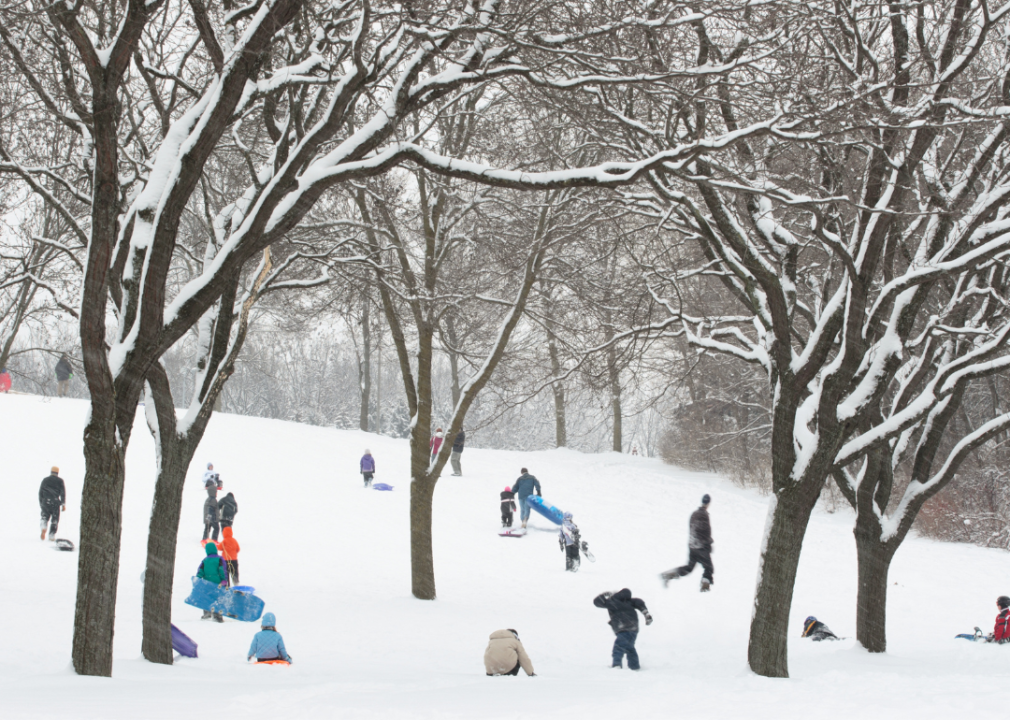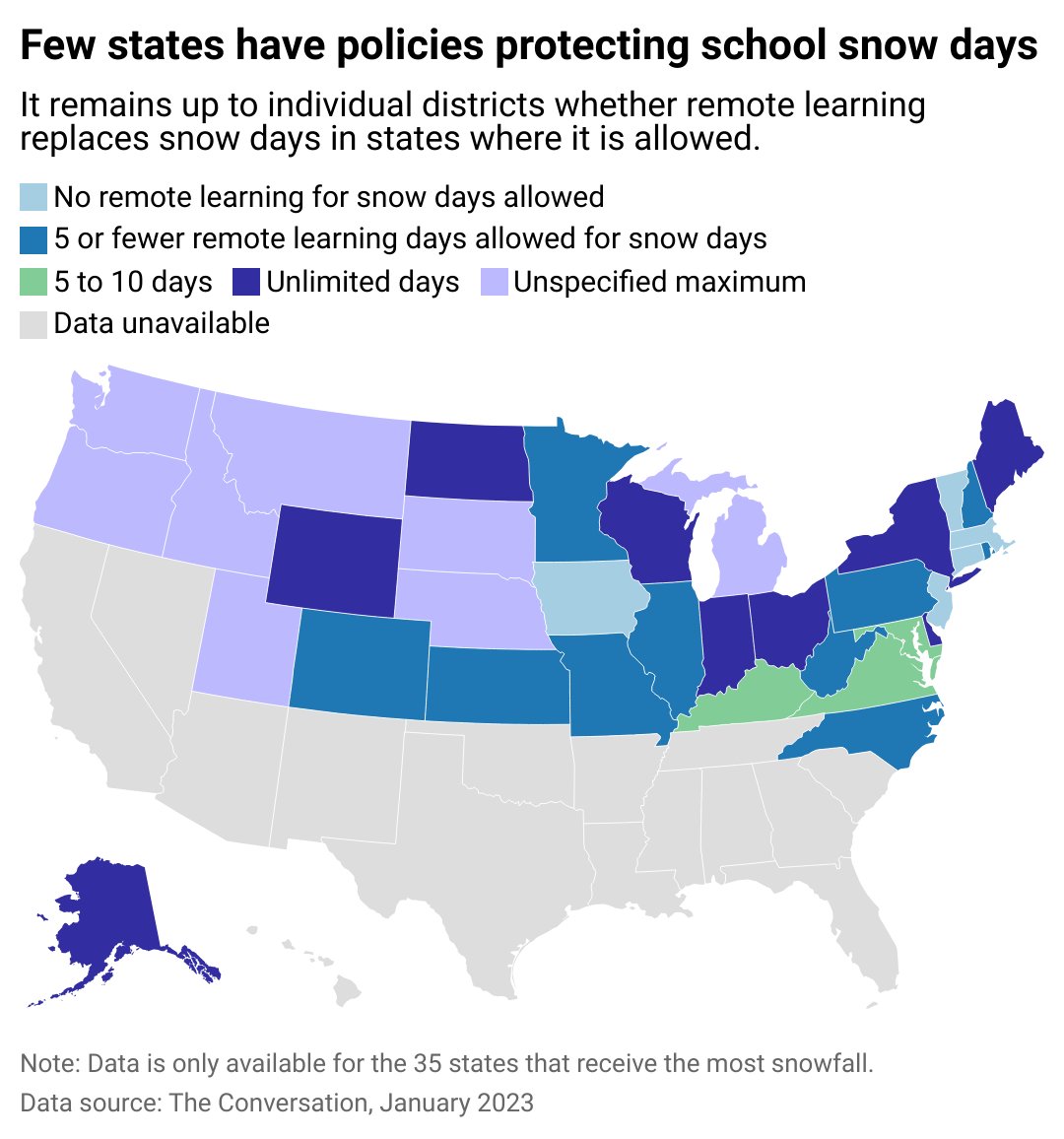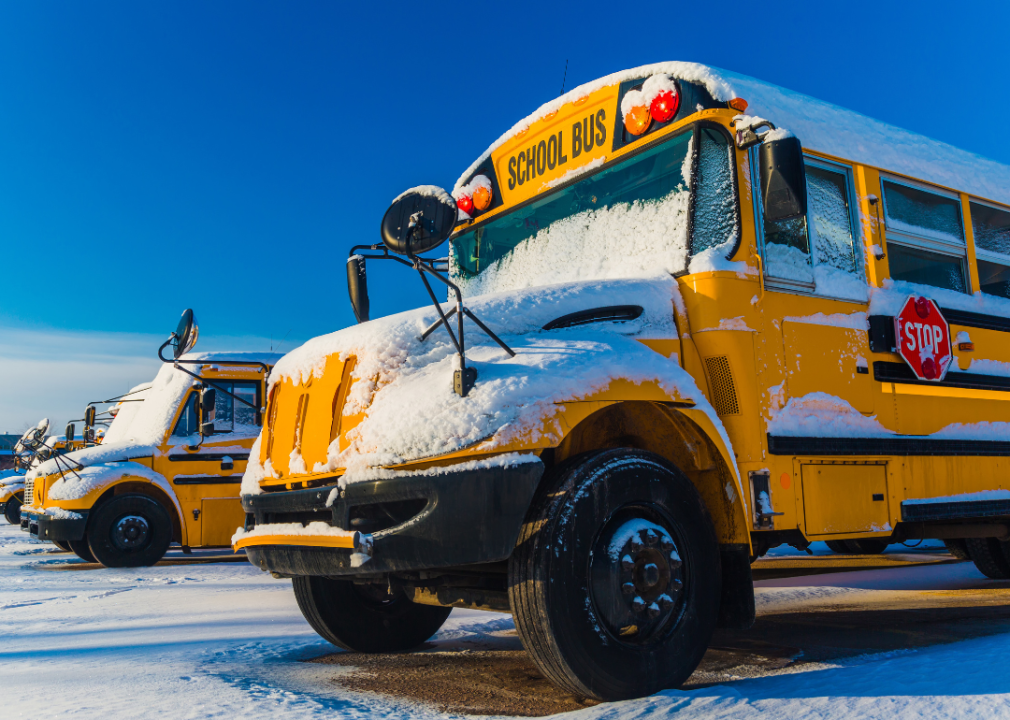In some school districts, it's the end of the snow day

Canva
In some school districts, it’s the end of the snow day
People of all ages sledding and playing on a snowy hill.
It’s been a rite of passage for decades, but the snow day may melt away for students in America’s public schools. Due to technology, the COVID-19 pandemic, and the need for students to be consistently educated, the snow day may quietly become a thing of the past.
Using research from The Conversation and the latest news coverage, Numerade explored how some schools are replacing snow days with remote learning days. A “snow day” is when a school district cancels school because of heavy snow, low temperatures, or excessive ice. The extreme weather makes it too dangerous for children to travel to school without the likelihood of an accident, whether via a school bus, a car, or on foot. For many in the continental U.S., it represents a day of freedom—an unexpected vacation day.
During a snow day, schoolchildren in America do everything from sledding with friends or watching cartoons in their pajamas to relaxing from the rigors of high-stakes testing.
While districts haven’t announced the official abandonment of the snow day, some major districts serving wide student populations have begun swapping snow days for remote learning, including districts in New York City; Anchorage, Alaska; and St. Paul, Minnesota.
About 2 in 5 (39%) district leaders and principals reported their district had already transformed snow days into opportunities for remote learning, and 32% indicated their districts were contemplating making this change, according to a November 2020 survey conducted by the EdWeek Research Center.
Since the pandemic required families to quarantine, many homes are still digitally rigged for remote learning. Additionally, some school systems prefer to keep learning consistent; there is no formal education during traditional snow days, which breaks up the educational routine. Also, when school districts use too many snow days, they typically add make-up days to the end of the school year, delaying summer vacation
Critics of throwing in the shovel on snow days say they are an important part of American culture. Moreover, not all children have the same level of technology at home, which hurts the quality of at-home learning. Not to mention learning during winter months can be especially challenging for students due to the lack of Vitamin D from sunshine. An unplanned day off is welcomed for children to refresh their minds, proponents of snow days say.
![]()

Numerade
The opportunities and barriers of swapping out snow days
State map showing few states have policies protecting school snow days, including Massachusetts, New Jersey, Iowa, Vermont, and Connecticut. In states where replacing snow days with remote learning is allowed, it remains up to individual districts to make the call.
Remote learning contingency plans for snow days predate the pandemic. As researched by The Conversation, at least 14 states allowed other learning options for inclement weather days prior to 2020, including take-home packets and e-learning modules. In some school districts, students can shovel snow as part of their physical education class during e-learning days due to snowy weather.
Through remote learning, students can keep their minds agile and not worry about having to “make up” days at the end of the school year or being harmed while traveling during adverse winter conditions.
However, snow days are such a big part of American culture—students even try to conjure snow to have one—that it seems like a big shift to ditch them all together.
Research has found that school closure during snow days doesn’t impact learning as much as when individual students decide to miss school because of bad weather. According to Joshua Goodman’s 2015 article “In Defense of Snow Days,” published by Education Next, heavy snow may create school closings, but it’s the moderate snowfall that increases individual absentee rates, which create poorer test scores, particularly in math.
In the article, Goodman, then an assistant professor at Harvard Kennedy School, recommended superintendents err on the side of canceling school when the weather is poor because it leads to less impact on test scores. Otherwise, some students—disproportionately students of color from lower-income households—will stay home, which hurts test scores more. Limits in transportation often account for these absences. Goodman is a proponent of “sleducation” during school closures, encouraging teachers to declare snow hours or afternoons during inclement weather, coupled with remote learning.

Canva
The future of the snow day
School buses covered in snow.
While remote learning may be touted as a viable alternative to learning in school, research from the Northwest Evaluation Association shows that schools that had remote learning longer fared among the worst when it came to student test scores. Furthermore, not all students have the same digital infrastructure at home. Local property taxes fund local schools, so less money is available in poorer districts to supplant homes with high-speed internet and late-model computers.
In some cases, take-home paper packets are still available as an option, and in districts like Seattle, every student has access to a laptop or iPad.
Realistically, snow days don’t turn into snow months. Unlike global pandemics, the sheer nature of the snow day is fleeting and finite.
Story editing by Shannon Luders-Manuel. Copy editing by Paris Close. Photo selection by Lacy Kerrick.
This story originally appeared on Numerade and was produced and
distributed in partnership with Stacker Studio.
